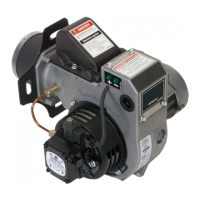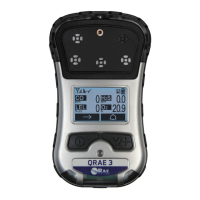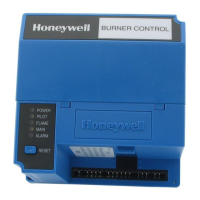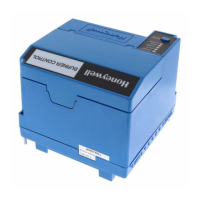25
Honeywell Titan SCBA, 20132
c. Inspect the cylinder, remove ice, clean the threads,
and take care to prevent water from entering the cyl-
inder or accumulating on connecting surfaces.
d. Icing will be accelerated by high air ow conditions.
Examples may include, but are not limited to:
• Bypass usage
• Facepiece leakage due to improper sealing
• Allowing the regulator to free- ow when the
facepiece is off
• Improperly maintained equipment
e. After cleaning, allow the SCBA to dry completely
before returning it to storage. Be sure the facepiece
exhalation valve is dry before placing the facepiece
into storage.
12. Accessories
Cold weather conditions may have adverse effects on
the performance of the SCBA accessories.
a. Air line hoses can become stiff.
b. Ice on quick-disconnect couplers can make them
dif cult or impossible to connect.
c. Plastic components can become brittle.
d. Electrical equipment (e.g., radios, PASS devices,
and lights) tends to become more dif cult to use in
cold temperatures, especially if there is ice.
e. Use SCBA accessories with extreme care in cold
weather conditions. Visually inspect them periodically
for ice.
I. Storage
WARNING
The SCBA must be stored in a cool, dry
location with the cylinder valve closed and
the air pressure vented from the system.
Storing an SCBA with the cylinder valve
open and the system under pressure can
result in damage to elastomeric materials
in the regulator, particularly if the SCBA is
stored at temperatures above 160°F (71°C).
Damage resulting from improper storage
could result in reduced fl ow or even stopped
fl ow conditions, resulting in injury, illness,
or death.
1. Inspect, clean, and repair as required before storing.
a. Connect a fully charged air cylinder to the CGA
handwheel and secure it in the backpack.
b. Check that the cylinder valve locking sleeve (if so
equipped) is in the LOCKED position.
c. Check that the bypass is closed.
d. Fully loosen the harness adjustment straps and
waist strap.
e. Fully loosen the facepiece headstraps.
f. Place the facepiece in a mask bag.
2. After inspection, cleaning, and necessary repair, the
SCBA should be stored away from dust, sunlight, heat,
extreme cold, excessive moisture, or damaging chemi-
cals.
J. Flow Test
WARNING
Direct contact with CBRN agents requires
proper handling of the SCBA after each use
and between multiple entries during the
same use. Decontamination and disposal
procedures must be followed. If contaminated
with liquid chemical warfare agents, dispose
of the SCBA after decontamination. Failure
to comply with this warning may lead to
personal injury, illness, or death.
The SCBA must pass an annual performance ow
test, utilizing a properly calibrated Honeywell Analytics
PosiChek3 with Honeywell-speci c software. Mainte-
nance and repair, unless otherwise speci ed in this
manual, must be performed by a Honeywell-certi ed
technician. SCBAs subjected to daily or severe service,
such as heavy use, extreme temperatures, ame, or
exposure to chemicals, require more frequent servic-
ing.
WARNING
CBRN agent contaminated SCBAs are
required to be decontaminated to remove
gross contamination. The concentration
must be quantifi ed, and the SCBA must be
containerized and properly disposed of in
accordance with local, state, and Federal
hazardous waste regulations as the incident
response allows.
K. Cylinder Valve Overhaul Schedule
Cylinder valves must be overhauled according to the
following schedule:
1. Cylinder valves on aluminum or fully wrapped carbon
ber cylinders must be overhauled every 5 years or at
each hydrostatic test.
2. Cylinder valves on hoop-wrapped berglass cyl-
inders must be overhauled every 6 years or at every
other hydrostatic test.
L. Cylinder Hydrostatic Test Schedule
Cylinders require hydrostatic testing to verify that the
cylinder can hold its rated pressure. Hydrostatic testing
is required by the Department of Transportation (DOT)
at the following intervals.
1. Aluminum—every 5 years.
2. Hoop-wrapped—every 3 years (15-year life)
3. Fully wrapped carbon ber—every 5 years
(15-year or 30-year life).
M. Maintenance Record
A maintenance record must be kept for each SCBA,
noting at least:
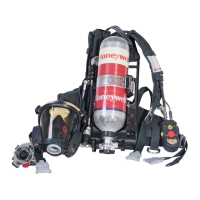
